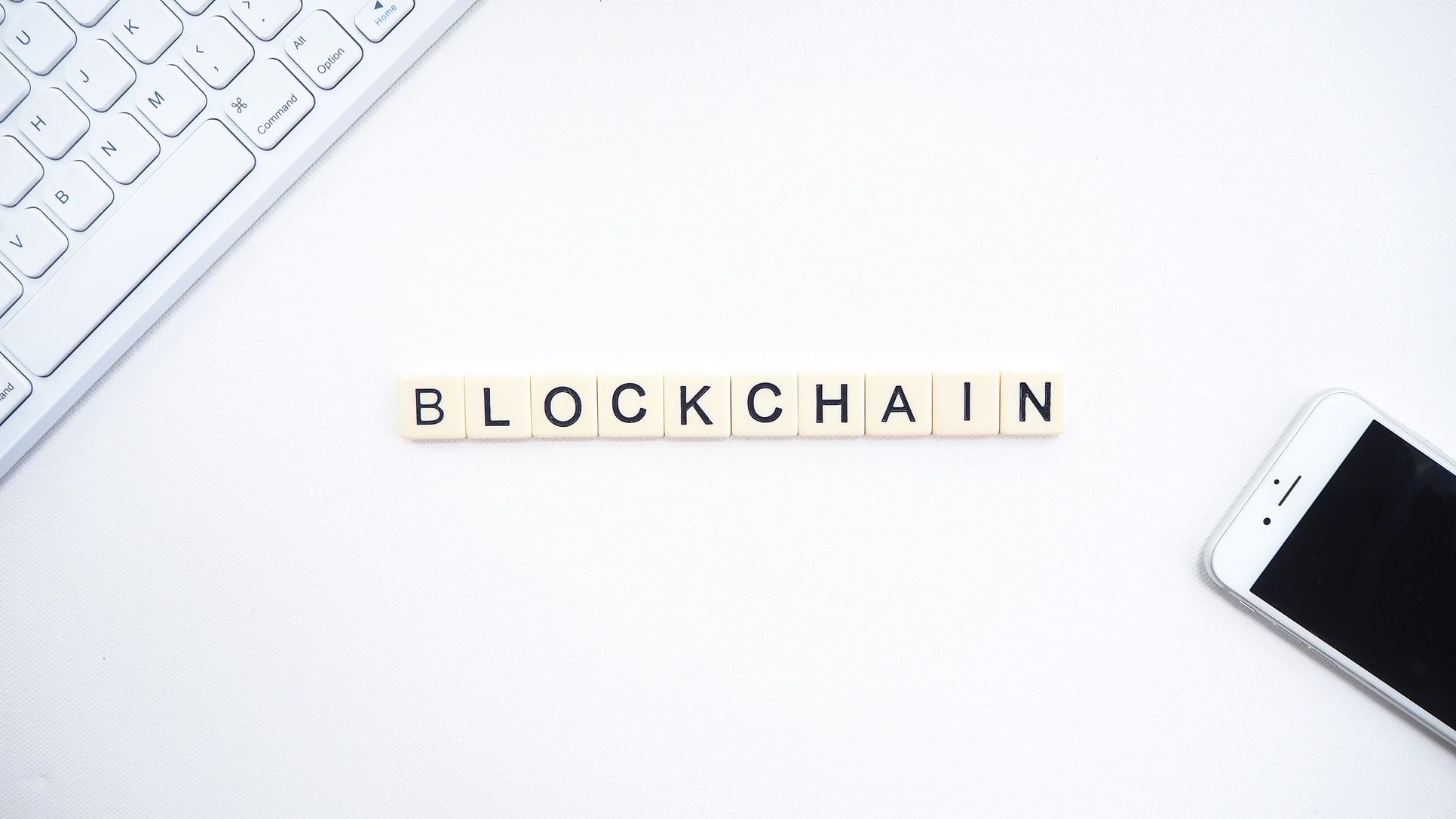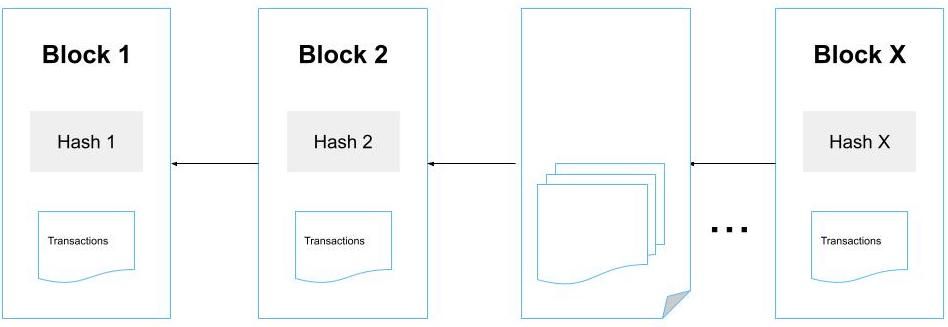Everything you need to know about blockchain
A non-technical explanation to what blockchain technology is and how applications are being built on it. If you're a beginner like me, this is a great place to start!

It seems like almost everywhere I go I've been hearing the terms Bitcoin, Ethereum, or blockchain. Maybe this is just typical Bay Area tech talk, but I honestly think it's becoming increasingly clear to the masses how powerful crypto and blockchain are becoming, to the point where I think it's necessary to have some sort of literacy on this topic.
Now there's a lot of different topics to start from, such as the different types of blockchain, crypto, NFTs, DeFi, etc. For now, we'll keep it simple and talk only about blockchains and the specific mechanism of them in this "explain to me like I'm a little kid" style article.
A quick disclaimer for this article, most of the things here I will be mostly mentioning only the benefits of blockchain technology and the applications being built on top of it. The space is incredibly new and there's a lot that can and will change in the next few years.
Table of Contents
What is a blockchain?
A blockchain is a decentralized, public, and immutable ledger of transactions that is hosted on a peer-to-peer network of nodes (computers). Okay, that's a little technical so let's break this down into layman terms.
- Decentralized Network: This simply means that there is no governing body controlling the network of computers. It's trustless. Every computer in the network has the same exact data as another, and transactions occur with no middleman or central body.
- Public: Everybody can view what is happening on the blockchain. All information (transactions) are available to the general public.
- Immutable: Once a transaction is created, it can no longer be changed nor destroyed.
Blockchains can record transactions and assets publicly, which acts as a verifier for ownership. This opens up endless opportunities for businesses and communities in the future (some of which we'll cover in later sections). For now, we'll focus on exactly how blockchains work and some key concepts you need to know.
How do blockchains work?
Let's note that there are many different blockchains in the world. Bitcoin and Ethereum are the most popular today, but hundreds of more exist. Each blockchain has its unique way of handling transactions and states, but I'll underline some concepts that are standard amongst all.
First, let's go over how a transaction occurs on the blockchain. A series of transactions are stored on "blocks" and each block is chained to the previous block. This how blockchains ensure that all the data is immutable. No blocks can be inserted in between one another and no transactions can be changed within a block.

Proof-of-work vs Proof-of-stake
How does a transaction get added? Through a process called mining or proof of work. You've probably heard this a lot when people talk about mining Bitcoin or mining Ethereum, but let's breakdown what this actual means.
- Nodes (miners) compete with each other to solve a complex mathematical problem (using code and algorithms). Any node on the network can become a miner.
- The first miner to solve this problem is rewarded and can create the block.
- Other nodes validate the work from the miner. If it is successful they also receive cryptocurrency. Miners who fail this don't receive anything
- All nodes on the network update to accommodate the new block of data. Remember, all blocks on the network need to have the exact same data.
As you can see, miners have a huge incentive for being the fastest. However, there has been on major criticism for this. Energy. It's what made Elon Musk tweet that Tesla would no longer accept Bitcoin. For the miners trying to create a new block or have failed to create one, a lot of time and energy has been wasted.
Tesla & Bitcoin pic.twitter.com/YSswJmVZhP
— Elon Musk (@elonmusk) May 12, 2021
Recently, new mechanisms have been introduced to move away from proof-of-work. Specifically, a new consensus mechanism called proof-of-stake is key to reducing the energy expenditure from current blockchains. Although, this does a few more technical challenges.
- Nodes can become validators by staking some cryptocurrency. For the Ethereum blockchain, this is 32 ETH (~100k USD at the time of writing).
- Validators are chosen at random to create blocks and are also responsible to check and confirm blocks they don't create.
- Validators that check the block earn a transaction fee if this block is valid. Otherwise, the validator that created the block may lose its stake.
- All nodes again will update the newly added block to their copy.
Proof of stake reduces the competitiveness of mining, since it no longer incentivizes you to be the fastest one. There is some technical complexity, and the entire concept is still in its infancy stages. But new concepts like this aim to solve a lot of the current issues in blockchain and may be a key component in making this technology mainstream, which is why I decided to cover this.
Wallets, transactions, and keys
Okay, so we've covered exactly how the blockchain adds transactions and is maintained through a group of nodes. Let's go over how we can actually use this. First, we need to to understand the concept of a crypto wallet. These wallets are either software (Coinbase, Metamask, Rainbow) or hardware (Ledger, Trezor).

Crypto wallets don't actually store your funds, which are generally kept in your account. Instead, crypto wallets store two keys:
- Public key: An address that lets you send and receive transactions. This could be thought of as a username or an email.
- Private key: This is used to authenticate/sign anything you do related to your public key. It's cryptographically linked to your public key. We can think of this as your password. This is extremely important and is the key to everything you will own in the crypto world. Wallets generally give you a seed phrase (12-24 word messsage) that lets you sign into your private key instead of memorizing the entire key.
We use both these keys to both encrypt and decrypt messages using both your public key and private key. This is usually done by signing a transaction:
- Transactions are encrypted using a public key, which is decrypted only by the private key. "Trapdoor" functions make it impossible to reverse engineer the private key from only the public key. 256 bit security basically means no computer can crack this for the next few hundred years.
- Transactions are then signed using the private key. A digital signature is generated by combining the data being sent with the private key.
- Transactions can be verified as authentic through the public key.
Now let's talk about which wallets we can consider choosing from. I mentioned earlier that there are two types: software and hardware wallets. In general, you'll want both, and I'll give a brief summary of each.
Software wallets are applications that live on your computer or laptop. For example, Coinbase Wallet stores your private keys directly on your mobile device, not on Coinbase.com or any other website. Metamask is a Chrome extension that actually stores your private key on your brower's data store (memory bank). In this case, your private key is only accessible by reading code or through your seed phrase. In case this wasn't obvious, do not ever give up your seed phrase/private key. Your public key is the only thing other people should be able to see.
Hardware wallets on the other hand are physical devices that store your private key. For instance, Ledger hardware wallets store your private key in a certified secured chip, so no one else can access it. Their app also let's you buy and exchange crypto without having to transfer to another wallet. Generally, hardware wallets are harder to hack and are considered a much safer option.
Gas
Okay, so we know how blockchains work, how to create a wallet with a private key, and how to sign a transaction using a private key. How do I guarantee that my transaction goes to the a fast or fastest miner? In Bitcoin, this is a miner's fee, which essentially is a fee to pay Bitcoin miners to confirm your transaction in a timely manner. For other blockchains, especially programmable ones like Ethereum, this is called gas. Let's focus on Ethereum since there are much broader applications of gas fees on this blockchain aside (this is due to the large amount of DApps built on Ethereum).
Gas fees in Ethereum are a measurement of the computational effort to execute operations on the blockchain. Gas is typically denotated as gwei, which is equal to 0.000000001 ETH (10-9 ETH). Gas varies depending on the transaction, size of block (More complex apps require a larger block), and demand. You can pay higher gas fees for faster transactions, which could be very important if you are trying to complete a transaction faster than someone else. Gas fees for failed transactions are also paid to the miner regardless, so it's important to look at the network to ensure your transaction passes.

What applications are built with blockchain?
Okay, so we know blockchain at its core is a provides a public decentralized digital ledger. Now let's explore what applications are being built using this technology. These concepts will be applied across many blockchains, but Ethereum is the largest "programmable" blockchain.
Applications built on blockchain technology are often referred to as Decentralized Applications (DApps). Dapps typically have a user interface such as Google Search but utilize smart contracts, programs that run and utilize blockchain technology. Dapps truly are powerful due to their inheritance of blockchain technology, so let's briefly summarize some of the most popular dapps today.
Decentralized Finance (DeFi)
DeFi applications focus on building financial services using blockchain technology. Specifically, DeFi allows you to do most things that banks do - interest, borrow, lend, trade - but without a third party. Blockchains peer-to-peer network makes DeFi faster and easier. Here are some highlights of what DeFi can represent:
- Anyone can open an account in a matter of seconds. There is no need to wait for the bank or applications to process.
- A DeFi's product is fully transparent and all of the data is public knowledge.
- Funds can transfer in a matter of minutes rather than business days.
- You control money rather than relying on a bank or institution

DeFi's are a fairly new concept trying to replace an incredibly traditional system. While there are some great benefits, the space is completely new. Things such as taxes, volatility, and other unknown regulations are very unclear.
NFTs (Non-fungible tokens)
NFTs are probably one of the most interesting spaces in the blockchain world and may be the reason you're reading this article. NFTs can really be anything tied to the blockchain, but the current popularity lies in digital art, specifically created through generative art. Generative art is essentially where a program, code, randomizes and generates attributes.
Generative art NFTs have really taken their place in profile pictures, with some popular ones such as Bored Ape Yacht Club bearing a 120k (40 ETH) entry fee. Unlike real art, NFTs can be easily authenticated and sold through the blockchain.

NFTs are a growing concept and definitely too much to explain in one small section, but if you're interested in them, definitely subscribe for our upcoming guide on NFTs. In short there's a lot more to NFTs than just digital art. They're becoming communities, investments opportunities, and much more than just a "jpeg" (were they ever just one though).
Gaming
A lot of dapps are finding their way into the gaming industry, with Axie Infinity quickly becoming one of the most popular through a play-to-earn business model. In play-to-earn games, the digital assets in the game can become tokenized on the blockchain, which means you can actually sell or exchange these assets for cryptocurrency.

In Axie Infinity, players can earn their own token called $SLP (Smooth Love Potion), which currently trade at $0.076 cents each and are used to breed Axies, the games version of a Pokemon. Another token called $AXS (Axie Infinity Shards) which give the holders voting powers to make decisions such as changes in game functionality and treasury fund spending.
Each Axie is an NFT with special traits and can be sold for real world currency. Some of the rarer Axies have even sold for 300 ETH (~930k USD) This is all possible due to the power of the blockchain, which makes converting dapps into a currency incredibly easy.
If you've made it this far, then congrats! I hope you understand blockchain technology a little bit better. There's still a ton of information to learn and I hope I can continue to add and update this blog.
Time in the blockchain world seems to move incredibly different. New dapps are being created daily while dozens of NFT projects are being released. The space is incredibly new and while there is a lot of money invested, it still isn't even close to mainstream.
If you've liked this article, please share it and subscribe! More content like this will be released daily.
